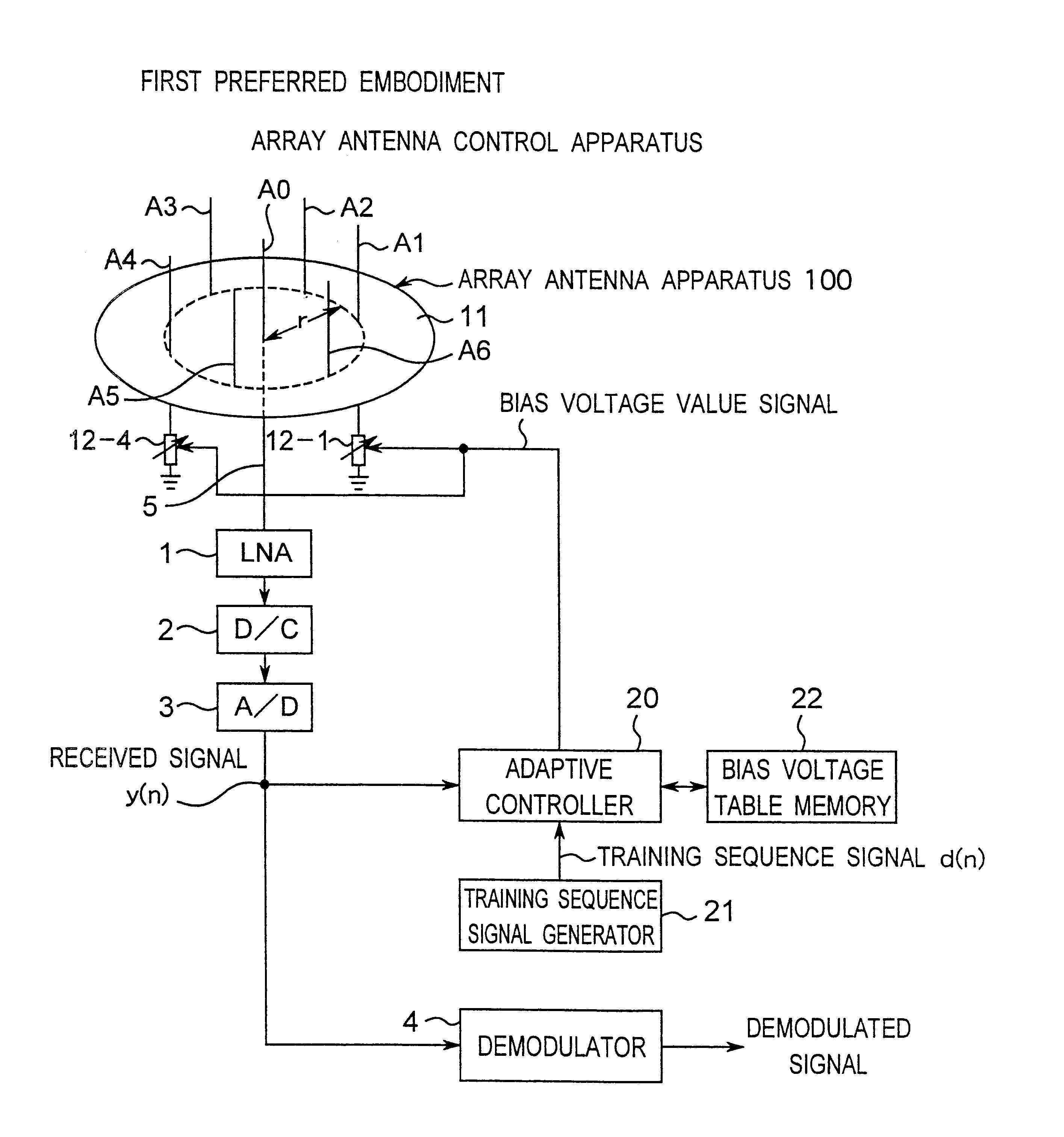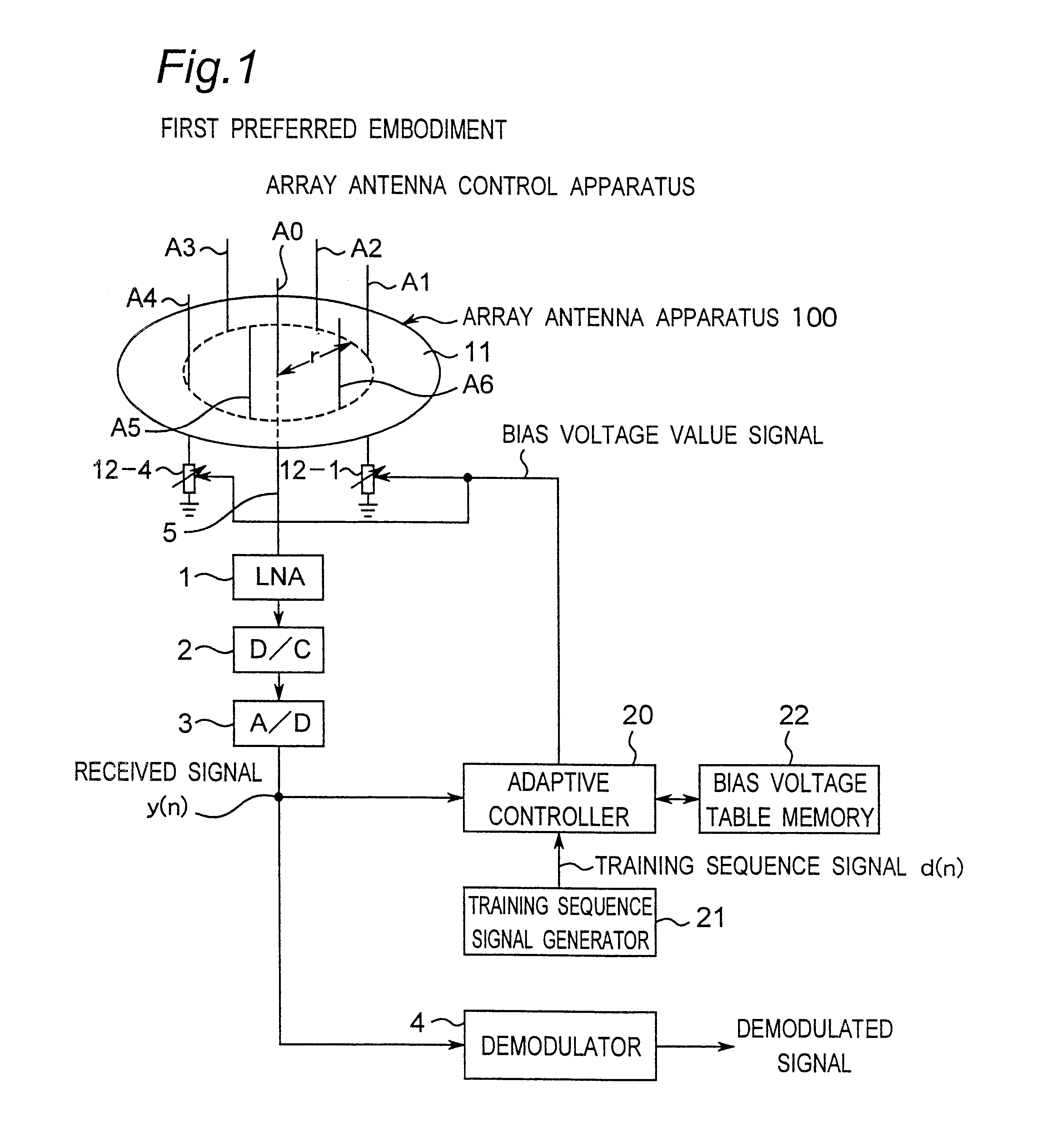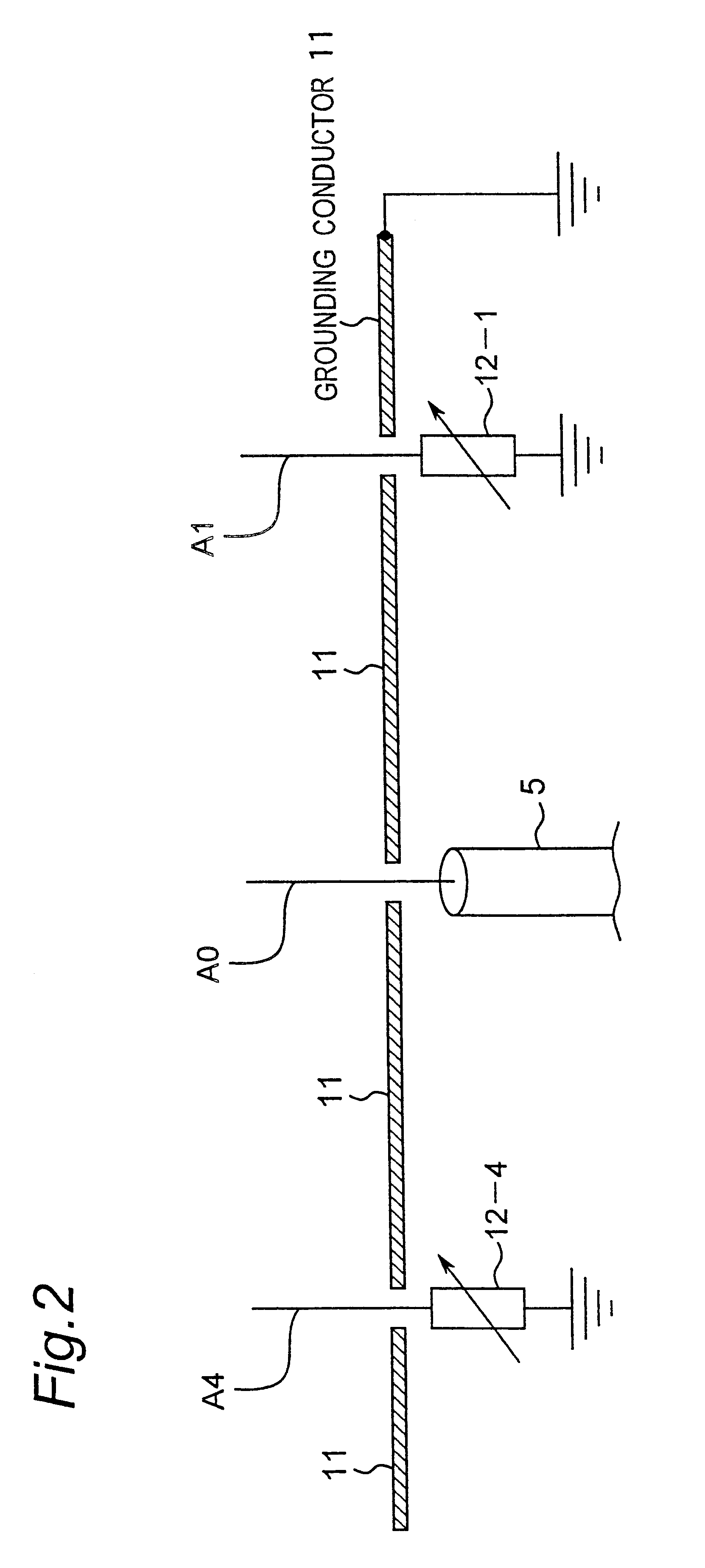Method for controlling array antenna equipped with single radiating element and a plurality of parasitic elements
a technology of array antenna and parasitic element, which is applied in the direction of antenna array, electrical apparatus, antennas, etc., can solve the problems of increasing the number of calculations, the inability to observe any signal on a passive element, and the inability of most methods prepared for conventional adaptive arrays to directly apply to the espar antenna
- Summary
- Abstract
- Description
- Claims
- Application Information
AI Technical Summary
Benefits of technology
Problems solved by technology
Method used
Image
Examples
second preferred embodiment
FIG. 14 is a block diagram showing a configuration of an array antenna control apparatus which is a second preferred embodiment according to the present invention. The array antenna control apparatus of the present preferred embodiment, as shown in FIG. 14, includes: an array antenna apparatus 100 which is the ESPAR antenna and which is equipped with one radiating element A0 and six parasitic elements A1 to A6; an adaptive controller 20A; a training sequence signal generator 21; and a control voltage table memory 30 connected to the adaptive controller 20A. The adaptive controller of the second preferred embodiment is characterized in that the adaptive controller 20A is provided instead of the adaptive controller 20, as compared with the array antenna control apparatus of the first preferred embodiment shown in FIG. 1. The following description will be focused mainly on this difference point.
In this case, the adaptive controller 20A, which is implemented by a computer or the other d...
third preferred embodiment
FIG. 27 is a block diagram showing a configuration of an array antenna control apparatus which is a third preferred embodiment according to the present invention. The array antenna control apparatus of the present preferred embodiment, as shown in FIG. 27, includes: an array antenna apparatus 100 which is the ESPAR antenna and which is equipped with one radiating element A0, six parasitic elements A1 to A6 having variable-reactance elements 12-1 to 12-6 loaded thereon, respectively; a grounding conductor 11; an adaptive controller 20B; and a training sequence signal generator 21. This third preferred embodiment is characterized in that the adaptive controller 20B is provided instead of the adaptive controller 20 shown in FIG. 1, as compared with the first preferred embodiment. The following description will be focused mainly on this difference point.
In this case, the adaptive controller 20B, which is implemented by a computer or the other digital computing machine as an example, is ...
fourth preferred embodiment
FIG. 51 is a block diagram showing a configuration of an array antenna control apparatus which is a fourth preferred embodiment according to the present invention. The array antenna control apparatus of the present preferred embodiment, as shown in FIG. 51, includes: an array antenna apparatus 100 which is the ESPAR antenna and which is equipped with one radiating element A0, six parasitic elements A1 to A6 having variable-reactance elements 12-1 to 12-6 loaded thereon, respectively, and. a grounding conductor 11; an adaptive controller 20C; and a training sequence signal generator 21. This fourth preferred embodiment is characterized in that the adaptive controller 20C is provided instead of the adaptive controller 20, as compared with the first preferred embodiment shown in FIG. 1. The following description will be focused mainly on this difference point.
In this case, the adaptive controller 20C, which is implemented by a computer or the other digital computing machine as an examp...
PUM
 Login to View More
Login to View More Abstract
Description
Claims
Application Information
 Login to View More
Login to View More - R&D
- Intellectual Property
- Life Sciences
- Materials
- Tech Scout
- Unparalleled Data Quality
- Higher Quality Content
- 60% Fewer Hallucinations
Browse by: Latest US Patents, China's latest patents, Technical Efficacy Thesaurus, Application Domain, Technology Topic, Popular Technical Reports.
© 2025 PatSnap. All rights reserved.Legal|Privacy policy|Modern Slavery Act Transparency Statement|Sitemap|About US| Contact US: help@patsnap.com



